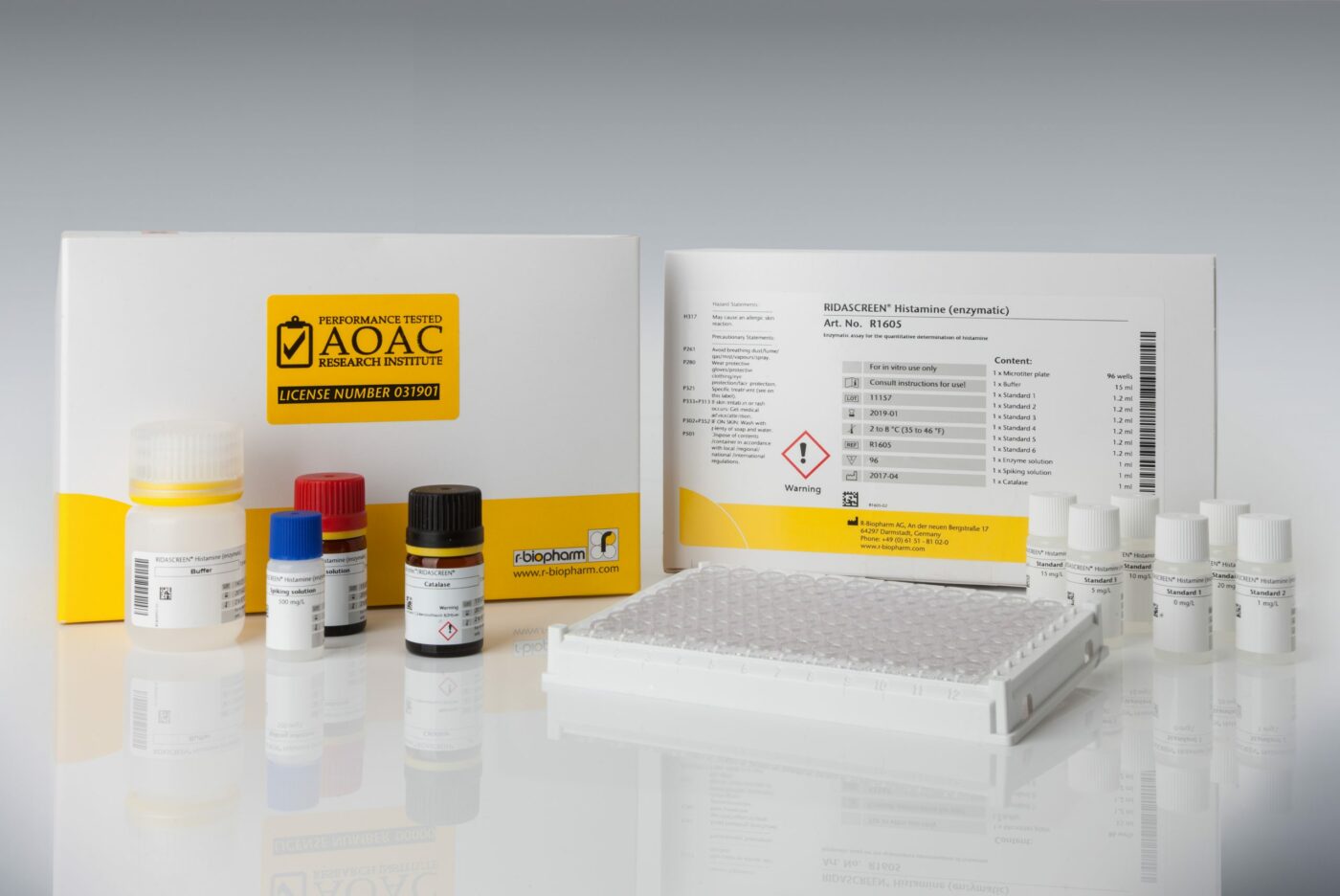
Recent news in Food & Feed Analysis
- Home
- /
- Histamine intolerance: What you...
Histamine intolerance: What you need to know about eating fish

If you have histamine intolerance, you must avoid many foods: Histamine is present in a lot of products from eggs and cheese to meat and fish. If you don’t want to give up eating fish, here’s how to enjoy your meal without regret.
Proteins are a vital component of our daily nutrition. They are essential for building muscles, cells, organs, tissues and bones. Plus, they control important metabolic processes and support the immune system. But too much protein can be harmful to health – especially if you suffer from histamine intolerance. Histamine is a natural product of the decomposition of the amino acid Histidine. Amino acids are the building blocks of proteins: So wherever proteins are present, there also is histamine.
Anyone suffering from histamine intolerance has to avoid foods with high histamine levels. Histamine is produced during fermentation. Therefore, foods such as hard cheese, red wine, beer, vinegar, sauerkraut and soy products must be avoided. Histamine is also produced in fish during storage: High histamine levels in fish indicate a spoilage. In addition, there are many more foods which are not well tolerated. These include eggs, meat, ham, sausage, mushrooms, tomatoes, wheat, yeast, nuts, spinach, avocado, bananas and citrus fruit. Approximately 1 percent of the population is affected; most of them women.
Histamine levels of fish
Histamine intolerance is a bit different to other food intolerances: There are few general indications about foods that are allowed or forbidden. Histamine levels are subject to naturally strong fluctuations. For example, freshly caught fish contains virtually no histamine. However, histamine levels increase quickly during storage. Until the fish ends up at the shop counter, it may contain very high levels of histamine. The freshness of a product is therefore a key factor. The table below provides a general overview on histamine levels in different types of fish:
| Fish product | Histamine level |
|---|---|
| Fresh fish (e.g. salmon, saithe, redfish, cod, hake, hoki, plaice, trout, zander) | low-histamine |
| Frozen Fish (also fish fingers) | low-histamine |
| Fish oil capsules | low-histamine |
| Canned fish (e.g. tuna, anchovies, sardines, mackerels, herring, rollmops) | histamine-rich |
| Smoked or dried fish (e.g. smoked salmon, stockfish, salted herring) | histamine-rich |
| Marinated fish | histamine-rich |
| Seafood (e.g. squid, mussels) | histamine-rich |
| Crustaceans (e.g. shrimps, crabs, prawns) | histamine-rich |
Low-histamine cooking
Adhering to a low histamine diet isn’t easy. Histamines are present in many basic foodstuffs and in almost every ready-made and restaurant meal. Anyone who doesn’t want to give up fish and pizza despite having histamine intolerance, will enjoy this recipe: On chefkoch.de, we found a low-histamine pizza without any wheat, yeast or tomatoes, but with spelt, peppers, zucchini and salmon. It is important to note that frozen fish should only be thawed for some minutes (about 10 minutes in cold water or in the defrost program of your microwave).
When thawing fish for a longer period of time, histamine is produced. After that, rinse the fish with water and dab it dry. Don’t use lemon juice for seasoning and don’t freeze the fish again after thawing.
Histamine detection
You want to ensure that your food is safe for people suffering from histamine intolerance? Just use our reliable test systems for the detection of histamine!

